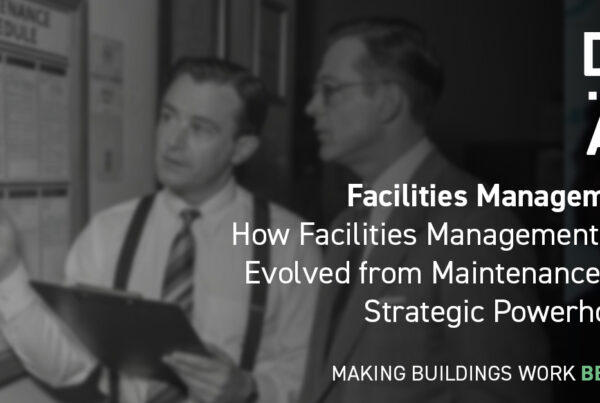
Asset Validation Surveys: Smarter Facilities Management & Compliance
How asset validation surveys provide clarity, compliance, and cost savings across your estate.
When was the last time you could confidently say you knew the exact number, condition, and compliance status of every asset across your estate? For many organisations, the answer is less clear than they’d like. Without an accurate picture of their assets, facilities managers and estate leaders often struggle to plan effectively, allocate budgets, and meet compliance obligations.
FACT: The reality is stark: according to the State of Facilities Management Report 2025 (SFG201), only 9% of FM professionals believe their asset registers are fully accurate and up to date. A third say theirs are only 50% accurate or less, and 6% admit they don’t have a register at all. These figures highlight just how widespread the issue is – and why asset validation surveys are so critical.
This is where an Asset Validation Survey becomes invaluable. It’s more than just a list of equipment – it’s the cornerstone of data-driven facilities management, giving you visibility and control over your buildings and everything in them.
In this article, we’ll explore what an asset validation survey is, how it’s carried out, and why it’s a critical tool for organisations that want to manage their estates efficiently, safely, and sustainably.
What is an Asset Validation Survey?
An Asset Validation Survey is a structured process that records, categorises, and verifies all the physical assets within a building or across an estate. These assets typically include mechanical and electrical plant, fixtures, fittings, and specialist equipment that are critical to a building’s operation.
Unlike a simple asset list, an asset validation survey goes deeper, collecting details such as:
- Location of each asset (floor, room, building)
- Condition assessment (e.g., grading A–D)
- Age and lifecycle expectations
- Compliance status against statutory maintenance requirements
- Operational efficiency and energy performance
The result is a comprehensive, validated asset register that can feed directly into a Computer-Aided Facilities Management (CAFM) system or service management platform like BiO®.
Asset Validation vs. Other Surveys
It’s important to distinguish an asset validation survey from other types of surveys:
- Condition Surveys focus on the current state of assets and the repairs required.
- Compliance Audits check whether specific statutory obligations are being met.
- Asset Validation Surveys underpin both of these by ensuring the asset register itself is complete, accurate, and reliable.
In short, asset validation surveys answer the question: “Do we know what we own and what condition it’s really in?”
How Are Asset Validation Surveys Carried Out?
The process of asset validation is both meticulous and technology-led. A typical survey follows these stages:
Preparation & Scope Definition
- Understanding the size, type, and complexity of the estate.
- Agreeing on which asset categories to include (M&E plant, fire safety equipment, IT hardware, etc.).
On-Site Data Collection
- Skilled surveyors visit each building, systematically recording every relevant asset.
- Each asset is tagged or barcoded for future traceability.
- Photos are captured for visual reference and quality assurance.
Condition & Lifecycle Assessment
- Assets are graded according to condition.
- Surveyors record estimated lifespans and replacement dates.
Compliance & Safety Checks
- Verification of statutory assets (e.g., emergency lighting, fire alarms, lifts).
- Cross-checking with current service records.
Digital Data Capture
All information is logged into CAFM/CMMS or facilities management software for consistency.
DMA Group uses its BiO® maintenance management platform to ensure data accuracy and enable reporting.
Final Report & Asset Register
- The output is a complete, validated, and digital asset register.
- Reports are customised for different stakeholders: FM teams, finance directors, sustainability leads, and governance boards.
The value lies not only in having the data but in having it digitised, searchable, and usable for strategic decision-making.
Why Are Asset Validation Surveys Important for Customers?
An asset validation survey is not just a box-ticking exercise – it delivers real business value across multiple areas of estate management.
1. Compliance & Risk Management
Without knowing exactly what assets exist, it’s impossible to ensure they’re being maintained and tested according to statutory requirements. Missing even a single critical asset could expose an organisation to compliance breaches, legal penalties, or health and safety risks.
2. Financial Planning & Lifecycle Costing
Accurate asset data allows finance teams to forecast replacement costs, plan budgets, and avoid the shock of unexpected failures. Lifecycle planning becomes far more reliable when you know the age and expected lifespan of every asset.
3. Operational Efficiency
A complete asset register allows maintenance teams to move away from reactive firefighting and adopt proactive scheduling. This reduces downtime, cuts emergency call-out costs, and ensures assets run more smoothly.
4. Energy & Sustainability
With sustainability targets becoming a statutory responsibility for many sectors (including education trusts and healthcare providers), asset validation surveys help identify inefficient or high-emission equipment. This enables organisations to prioritise upgrades that reduce carbon footprints and energy costs.
5. Strategic Decision-Making
Board-level decisions about estate strategy, investment, and risk management rely on robust data. An asset validation survey provides a single source of truth, ensuring leadership has confidence in the information they use to guide multi-million-pound decisions.
A validated asset register is also the first step towards a Strategic Asset Management Plan (SAMP), which turns data into a long-term roadmap for investment, compliance, and sustainability. Learn more about creating a Strategic Asset Management Plan here.
FACT: With 37% of UK facilities teams reporting that their registers are at most only 50% accurate, and 31% still relying on spreadsheets, it’s clear that poor data quality is leaving organisations exposed. An asset validation survey bridges that gap by creating a verified, digital register that can support compliance and lifecycle planning.
Common Challenges Without an Asset Validation Survey
Organisations that operate without a validated asset register often face predictable – and costly – challenges:
- Inaccurate or outdated data leading to missed maintenance.
- Compliance failures due to overlooked statutory assets.
- Unexpected breakdowns and emergency spending.
- Inefficient resource allocation, with budgets consumed by reactive repairs.
- Difficulty benchmarking performance across multiple sites.
These challenges compound over time, increasing operational risk and reducing the ability to deliver services efficiently.
FACT: The fact that only 22% of organisations update their registers monthly, while 28% do so just once a year, shows why many estates operate reactively. Outdated or incomplete records are a leading cause of missed compliance checks and costly emergency breakdowns.
Case Example: The Power of Visibility
Imagine a large organisation with multiple sites and a diverse estate. Before undertaking an asset validation survey, their maintenance programme was largely reactive, with unexpected failures leading to costly downtime and unplanned budget pressures.
Once they completed a comprehensive survey, they had a validated digital asset register integrated into their maintenance management system. This gave them visibility of:
- Which assets were nearing the end of their lifecycle
- Where compliance risks needed urgent attention
- How to phase investments more strategically over the next 5–10 years
The outcome was fewer emergencies, reduced costs, and greater compliance confidence – benefits that apply across any sector or estate type.
The DMA Approach
At DMA, we believe asset validation is the starting point for making buildings work better. Our approach combines:
- Experience alongside deep sector knowledge.
- Technology-enabled data capture, integrated with our award-winning BiO® maintenance management platform.
- Custom reporting, tailored for finance, estates, and sustainability leaders.
- Actionable insights, turning raw data into meaningful strategies for compliance, cost savings, and sustainability.
Whether you’re responsible for a single site or a large, complex estate, an asset validation survey will provide you with the clarity you need to manage assets with confidence.
Conclusion
An Asset Validation Survey is not just a technical exercise – it’s an investment in better governance, smarter planning, and safer, more sustainable buildings.
For facilities managers, it’s the difference between reacting to problems and proactively managing assets. For finance leaders, it’s the foundation for accurate forecasting and cost control. And for boards and trustees, it provides assurance that compliance and risk are being managed effectively.
Crucially, a validated asset register is also the first building block for a long-term strategy. Once you have reliable data, you can develop a Strategic Asset Management Plan to align estate management with your wider financial, operational, and sustainability goals.
If you don’t know exactly what’s in your buildings, how old it is, or when it needs replacing, now is the time to act.
DMA specialises in delivering asset validation surveys that empower organisations with accurate, actionable data. Talk to us today about validating your assets – and start making smarter, data-led decisions for your estate.



